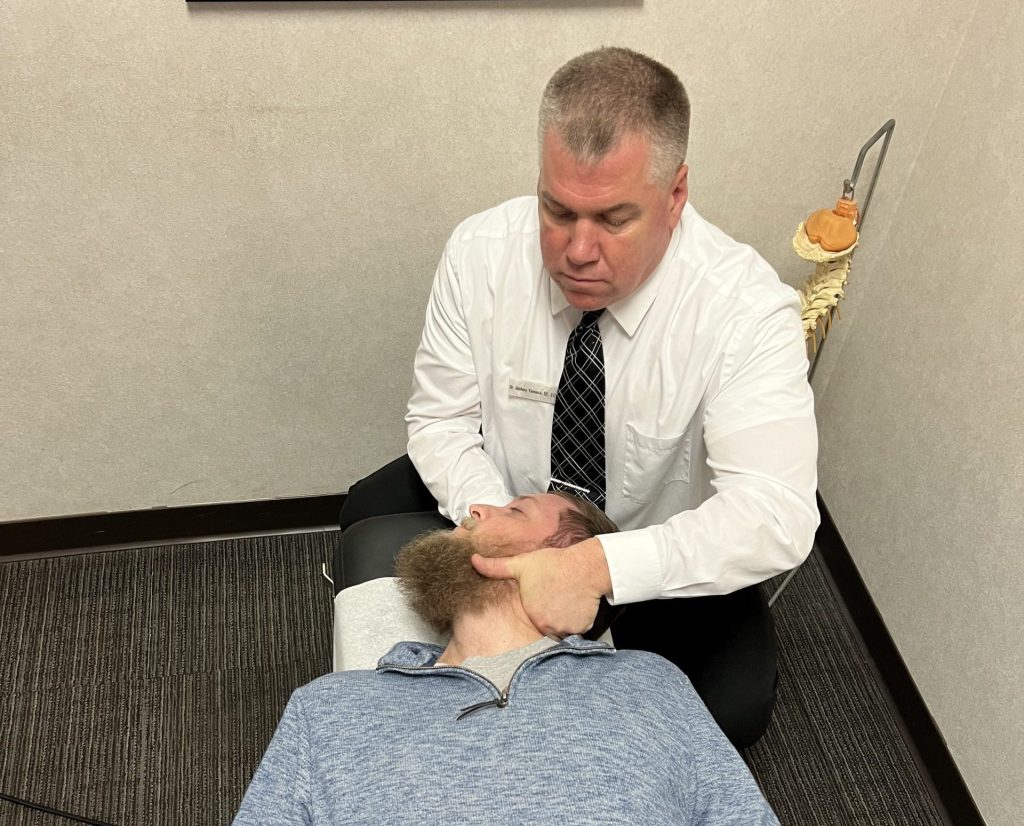Dizziness and vertigo are common symptoms encountered in clinical practice, often challenging to diagnose due to their multifactorial nature. Among the various etiologies, cervicogenic dizziness is a relatively under-recognized but significant condition that arises from cervical spine dysfunction. This post will explore cervicogenic dizziness and vertigo, detailing their pathophysiology, clinical presentation, diagnosis, and management.
Pathophysiology of Cervicogenic Dizziness
Cervicogenic dizziness is typically attributed to abnormal afferent input from the cervical spine, particularly from the upper cervical joints, muscles, and ligaments, which have rich proprioceptive innervation. The cervical spine plays a critical role in the body’s balance and spatial orientation through the cervical proprioceptive system. When dysfunction occurs, it can lead to disrupted sensory input to the central nervous system, particularly affecting the vestibular nuclei and cerebellum.
This dysfunction may result from various causes, including degenerative changes (e.g., cervical spondylosis), whiplash injuries, cervical disc herniations, or sustained abnormal postures. The mismatch of proprioceptive input from the cervical spine with visual and vestibular signals can manifest as dizziness or a sensation of unsteadiness, often exacerbated by neck movements.
Clinical Presentation
Patients with cervicogenic dizziness often describe a sensation of unsteadiness or lightheadedness, rather than true rotational vertigo. The dizziness is typically aggravated by certain neck positions or movements, such as turning the head, looking up, or bending forward. Other accompanying symptoms may include neck pain, stiffness, headaches (often occipital in nature), and occasionally, visual disturbances.
The dizziness associated with cervicogenic origins tends to be persistent but can fluctuate in intensity, often correlated with periods of increased neck pain or strain. Unlike vestibular causes of vertigo, cervicogenic dizziness does not typically present with nystagmus, unless there is concurrent vestibular involvement.
Differential Diagnosis
Differentiating cervicogenic dizziness from other causes of vertigo is crucial for effective treatment. The differential diagnosis should include:
- Benign Paroxysmal Positional Vertigo (BPPV): Characterized by brief episodes of vertigo triggered by specific head movements, BPPV is often diagnosed using the Dix-Hallpike maneuver.
- Vestibular Neuritis or Labyrinthitis: These conditions involve inflammation of the vestibular nerve or labyrinth, leading to sudden, severe vertigo often associated with nausea and vomiting.
- Meniere’s Disease: This condition is associated with episodic vertigo, hearing loss, tinnitus, and a sensation of fullness in the ear.
- Vertebrobasilar Insufficiency: Insufficient blood flow to the posterior circulation can cause dizziness, often accompanied by other neurological deficits.
- Migrainous Vertigo: Migraines can cause vertigo, which may be accompanied by headache, photophobia, and phonophobia.
- Central Causes: Neurological conditions such as multiple sclerosis, cerebellar disorders, or brainstem ischemia should also be considered.
Diagnostic Approach
The diagnosis of cervicogenic dizziness is primarily clinical, supported by a thorough history and physical examination. Key aspects include:
- Cervical Range of Motion Testing: Assessing for pain or dizziness with cervical movement.
- Cervical Palpation: Identifying tenderness or muscle spasm in the cervical paraspinal muscles.
- Positional Testing: While not diagnostic for cervicogenic dizziness, positional tests like the Dix-Hallpike maneuver can help rule out other causes such as BPPV.
- Vestibular Function Tests: Although these are generally normal in cervicogenic dizziness, they can be used to exclude vestibular pathologies.
- Imaging: MRI or CT of the cervical spine may be warranted if structural abnormalities or central causes are suspected.
Management of Cervicogenic Dizziness
Treatment of cervicogenic dizziness focuses on addressing the underlying cervical dysfunction. A multimodal approach is often most effective, including:
- Manual Therapy: Chiropractic adjustments, mobilizations, and soft tissue techniques can help alleviate cervical spine dysfunction. Evidence supports the use of manual therapy in reducing both neck pain and dizziness in cervicogenic cases.
- Exercise Therapy: Specific exercises aimed at improving cervical proprioception, strength, and flexibility are crucial. This may include cervical stabilization exercises, stretching, and postural retraining.
- Medications: While not typically the primary treatment, NSAIDs or muscle relaxants may be used to manage acute pain or inflammation.
- Vestibular Rehabilitation: In cases where there is a significant overlap with vestibular dysfunction, vestibular rehabilitation exercises may be beneficial.
- Education and Ergonomics: Teaching patients about proper posture, ergonomics, and movement strategies to minimize neck strain can prevent recurrence.
- Injection Therapy: For refractory cases, cervical facet joint injections or trigger point injections may provide relief.

Conclusion
Cervicogenic dizziness is a complex and often underdiagnosed condition that requires a comprehensive approach to diagnose and treat effectively. By understanding the intricate relationship between the cervical spine and the vestibular system, healthcare providers can better identify and manage this condition, improving outcomes for patients suffering from chronic dizziness and associated neck pain.
As with any medical condition, a tailored treatment plan based on the individual patient’s needs and presentation is essential for achieving the best results.

Recent Comments